Daniel Divinsky, 83, died in the early hours of August from the aggravation of kidney problems dating back to his childhood. He was a central figure in Argentine cultural history with an influence extending far beyond his publishing house, Ediciones de la Flor – its name and his will invariably be forever linked with Mafalda, Quino’s creation published for the first time as a book in 1970.
“Mafalda was first launched with a run of 200,000 and it sold,” said Divinsky when recalling the golden years of Ediciones de la Flor, thus illustrating the magnitude of an editorial phenomenon marking generations of readers in Argentina and Latin America. Underlying this success and the publication of authors like Quino, Roberto Fontanarrosa, Liniers, Caloi and Maitena was this editor who knew how to anticipate trends, defy convention and construct a catalogue of over 600 books.
The life of a precocious Divinsky was marked by a kidney disease leaving him bedridden at the age of five, a circumstance of which his teacher aunts took advantage to teach him to read. He entered the Law Faculty of UBA Buenos Aires University at the age of 15, graduating with honours at the age of 20 while never disguising his lack of interest: “I did law without any sense of vocation but in the end it did me good,” he admitted, evoking the advice of his doctor father, who warned him that literature was no way of making a living.
Divinsky’s links with the publishing world ran parallel to his legal career. First he collaborated in a university magazine and then he directed the student centre’s literary collection, financed by Perrot publishers. His relationship with Jorge Álvarez, a key Argentine publisher in the 1960s (ditto for rock later on), was consolidated in the latter’s bookshop and the Cine Club Núcleo, a meeting-place for porteño intellectuals. There he got to know Rodolfo Walsh and Pirí Lugones, who would be fundamental in creating Ediciones de la Flor.
That name was born in 1966 when Divinsky, his partner Oscar Finkelberg and Álvarez decided to invest in a publishing house after finding it impossible to open a bookshop for lack of funds. The name was coined by Pirí Lugones during a brainstorming session: “Ah, but what you want is a flor de editorial (a heck of a publishing house)!” she exclaimed and the phrase stuck. Lugones also contributed a decisive innovation: the use of porteño lunfardo slang in translations, an audacity which Divinsky celebrated as a break with the overly correct Spanish he had suffered as a childhood reader.
The initial catalogue of Ediciones de la Flor was eclectic and personal. Divinsky picked titles guided by his own taste and instinct in the belief that if something interested him, it would also find its echo among other readers.
“I figured out that if I liked something, it would surely please 1,500 or 2,000 maniacs with the same foibles as myself,” he explained. In order to nourish the publishing house, he subscribed to foreign publications like Le Magazine Littéraire and The New York Times Book Review, taking advantage of dominating several languages to access works not published in Spanish, publishing such rare editions as Opio by Jean Cocteau and the first translation of Vinicius de Moraes into Spanish after travelling to Rio de Janeiro to sign the contract at the Copacabana Palace Hotel.
The strategy of Lugones to attract consecrated writers was decisive: “No consecrated Argentine author is going to give a new book to the publishing house of inexperienced kids like you but writers are very vain and if you ask them what their favourite tale is and request a prologue explaining why, they’ll do it.” That is how on the second attempt, Ediciones de la Flor brought together Jorge Luis Borges, Ernesto Sabato, Manuel Mujica Lainez, Abelardo Castillo and David Viñas in an anthology legitimising it in the literary sphere.
In 1970, the publishing house produced two titles marking a before and after: the Mafalda comic strip by Quino and Operación Masacre by Rodolfo Walsh. Mafalda was an immediate and massive sales success with an initial launch of 200,000 copies. The publication of Operación Masacre consolidated the committed profile of the publishing house, which in no time faced censorship and repression. In 1977, Divinsky was detained for four months during the military dictatorship for publishing the German children’s book Cinco dedos (“Five fingers”), whose cover with a raised fist was interpreted as subversive. After that episode, he and his family went into Venezuelan exile for five years, from where he continued managing the publishing house at a distance.
During his exile, Divinsky directed the Departamento de Difusión y Distribución of the Biblioteca Ayacucho library in Caracas while co-editing the ‘Libros de Hoy’ collection of El Diario de Caracas newspaper. He was also in charge of the cultural section of the newspaper while later upon his return to Argentina with the restoration of democracy in 1983, he was trustee in Radio Belgrano – introducing Alejandro Dolina to radio, among other achievements –and directed Plural magazine. His journalistic work extended to editing the magazine of the Fundación Plural para la Participación Democrática.
The consolidation of Ediciones de la Flor as a referential source of Argentine humour and narrative came with the incorporation of María ‘Kuki’ Miler as director after the exit of Álvarez and Finkelberg. Under their joint leadership, Divinsky published figures like Roberto Fontanarrosa, Caloi, Rep, Sendra, Maitena, Dalton Trumbo, John Berger, Luis Rafael Sánchez, Ray Bradbury, Pablo de Santis and Marcelo Birmajer.
The catalogue was diversified with collections of essays, biographies, testimonial books, theatre and literature for children.
Divinsky’s relationship with authors was close and active. Fontanarrosa used to joke that the editor “concluded” their tales although Divinsky preferred to say that he was only putting the “finishing touches.” In an interview he defined: “The greatest satisfaction (as an editor) is ‘recognising’ —before I used to say ‘discover’ until my colleague Jorge Herralde pointed out to me that the author had previously existed— new authors and giving their books repercussion.”
Recognition of his career arrived in the form of prizes and distinctions: the Arnaldo Orfila Reynal prize in the Guadalajara’s International Book Fair (1977), a special mention in the Konex Prize (2004), recognition of his career by the Argentine Senate (2007), a Clarín prize (2011), the Al Maestro con Cariño (To Sir with Love) Diploma from TEA, and distinctions together with Kuki Miler at Guadalajara’s International Book Fair (1997) and from Congress (2007). He participated in the International Congress of the Spanish Language celebrated in Rosario (2004) and was a member of the executive board of the Cámara Argentina del Libro chamber of the publishing industry between 1988 and 2008 as its vice-president between 2000 y 2002.
By the decision of his family there was no wake but a more intimate cremation ceremony with his ashes tossed into the River Plate.

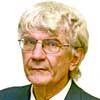










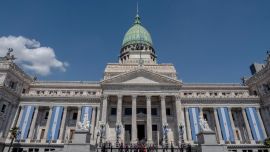

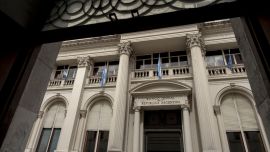



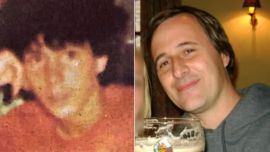
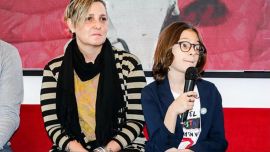

Comments